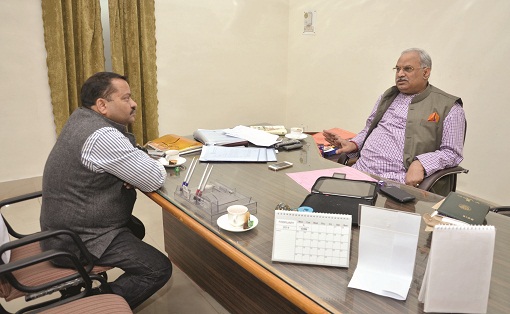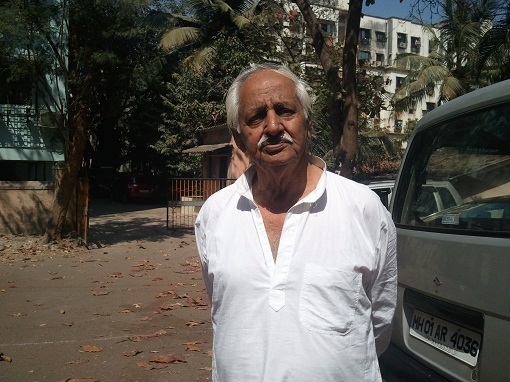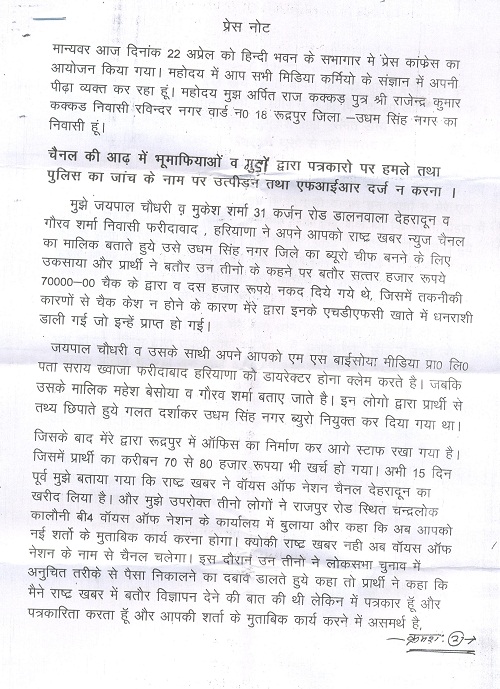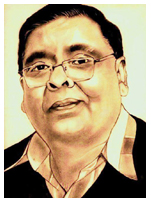अंग्रेजी बिजनेस डेली 'बिजनेस स्टैंडर्ड' में एक लंबा आलेख छपा है. मिहिर एस शर्मा का लिखा. शीर्षक है- ''Screaming to be heard''. इस लेख के आनलाइन लिंक को लोग एक दूसरे के यहां यह कहते हुए भेज रहे हैं कि– ''Kindly click the link below to see the Hilarious face of INdian TV journalism published in Business Standard.'' अगर इसको आपने अब तक नहीं पढ़ा तो अब पढ़ लीजिए. अंग्रेजी में है. इसलिए खांटी हिंदी वालों को समझने में थोड़ी मुश्किल होगी. कोई साथी अगर हिंदी अनुवाद कर दे या इस पूरे लेख का ब्रीफ हिंदी में पेश कर दे तो सारे भाई-बंधु पढ़-समझ लेंगे. -एडिटर, भड़ास4मीडिया
Screaming to be heard
Mihir S. Sharma / New Delhi
The soap-opera cast of greenhorn reporters, star anchors and omnipresent experts has morphed news television into reality television. They know you, those brilliant people that run news TV. They know that when you get home, worn out and exhausted after dealing with the coarse realities of the market economy, the last thing you need is the dry-as-paper reporting of facts. What you need, they discern, is entertainment. Diversions. You need drama! So they will give you something to outrage about. You need comedy! They’ll provide red-faced people shouting at each other incomprehensibly. You need soap operas! So they will follow a winding story with out-and-out villains and saintly heroes till they’ve wrung every last improbable twist from it. News is so 20th century. Shades of grey are meant to be printed, not televised.
Why look closely at reality when you can create your own? Never before has this been as clear as it has been in 2011, which has been as good a year for news TV as it has been a bad one for news-TV watchers — a clear indicator, incidentally, that there’s some sort of market failure happening. This year, there was no 26/11 to show up anchor-reporters’ pretensions, no general election to force them closer to the aam aadmi. They were free to script a history of this year quite dissociated from reality — and, like the prophets they believe themselves to be, to will it into existence.
Nowhere was this more obvious than in the Big Brother movement — discovered, publicised and sustained by news TV. It is difficult to imagine a time, now, when Big Brother Hazare will not sit down to fast (as long as the weather’s warm enough), and his backers on news TV will not try to make history bend to his will.
History, as that old bearded political economist told us gravely, happens first as tragedy and then repeats itself as farce. Karl Marx never explained what would happen when events were farcical the first time around. When Anna Hazare first skipped meals in April 2011, the Arab Spring was sweeping across north Africa, showing the power that people peacefully gathered together to protest had over unresponsive governments and also, more importantly, over TV audiences. Those brilliant people that run news TV were watching with imperfectly-concealed jealousy. A World Cup had been won, an IPL had yet to start; couldn’t they fit an Arab Spring in the middle? (Or an Arnab Spring, as everyone began saying.) Everyone loves a televised revolution, especially television.
The only revolution on offer in India was distastefully distant from South Delhi and had distinctly unsympathetic protagonists; so they had to create one closer. Which meant we were treated to endless trick shots of the tiny gathering at Jantar Mantar, where OB vans outnumbered protestors. Office-goers on their lunch break, eating ice-cream while gawking at the elderly man fasting, provided moving quotes about the impact of corruption on their lives. Anchors in the studio would froth at the mouth, building up Hazare as a second Gandhi — okay, perhaps here is where the tragedy/farce comparison comes in — and viciously attacking those who murmured a dissent. Absurdly intemperate tweets from “viewers” scrolled across the bottom of the screen. If this wasn’t an uprising, the anchor revolutionaries of news TV thought smugly, what was? And, sure enough, convinced that a take-back-our-country moment was at hand, the amateur candle-wavers of India’s middle class took back the streets they always had, and bullied a state that answers to them above all.
But, most importantly, those who felt it was a bit too hot to wander around the streets bravely supported the revolution by watching the news. TRPs nearly doubled, with would-be revolutionaries sacrificing Kingfisher Calendar Hunt to watch Kiran Bedi waving the flag on three channels simultaneously.
* * *
How did we get here? How did news television become so detached from reality? There are three ways, it seems, in which the thin lines attaching news TV to the real world have been cut.
First, there’s this tendency to hire reporters who, while in many cases talented, would in other countries still be working as an intern at their college magazine. As anyone can tell you, an experienced beat reporter is a walking compendium of knowledge. Most of them can contextualise effortlessly, placing any developing news in proportion; ask them an excited question about some piece of news, and they correct your naïveté with ghoulish readiness. The squeaky kids that TV tends to send out to report, though, think perspective is something the cameramen have to worry about.
Unless there’s a really big story, of course, in which case the Big Names arrive with a thud. Some anchor-reporters fly to the spot, asking the same questions to people at an anti-corruption rally that they just asked land-acquisition protestors. (“How do you feel?”) Barkha Dutt, for example, flew straight from Tahrir Square to Kolkata to cover Mamata Banerjee’s victory. Viewers want a well-informed reporter covering a story consistently; but that won’t happen, because those chaps might go native and tell things as they see it, instead of how Delhi wants us to see it.
Others are tied to their desks, but ask terrifically leading questions of the reporter on the spot, who tries desperately to give the godlike figure on the other end of the satellite connection the exact answer the deity had in mind. It was quite clear what Rajdeep Sardesai of CNN-IBN, frantically interrogating IBN’s reporters across Delhi the day Hazare walked out of Tihar, expected his employees to say. (“Yippee”, or words to that effect.) Pushy bosses in studios and overawed, inexperienced reporters in front of cameras wind up producing stories at right angles to reality.
Then there’s the tendency to blur the line between commentary and news. There’s a yawning news deficit between the hours of 8 pm and 11 pm. Consider: when you turn on a primetime news show, do you even expect news any more? You might want to be told what happened during the day. What you’re treated to instead is an endless succession of inept party spokesmen, of pontificating anchors, of soporific ex-bureaucrats and inane activists — but no reporting whatsoever.
The format of these prime-time shows warps the content. An exalted personage with the pulse of the “people” decides in the afternoon what the “issue” of the day is. Not what happened that will impact people’s lives, but what viewers will want to see a fight about. Every programme gets a one-line brief: “Is South Delhi envious of Anna’s diet?”, perhaps, or “Dravid or Gandhi — which Rahul for India’s youth?” Complaisant guests are found, a member of the Anna Politburo is sent a gilt-edged invitation, and then we are treated to an hour of the editor-anchor ham-handedly steering the conversation around to the talking point, over and again. If any of the inmates were to try and break out of the asylum, perhaps by making a point of real interest rather than a glib reiteration of the Question of the Day, he is brought to heel. Their answers are restated by the anchor to make them conform to a pre-imagined ideal of what they should be saying.
No programme goes beyond that one-line brief. It has reached the point where the hyper-educated, well-read editor-anchors of news TV cannot extend a thought over two sentences instead of one. No wonder they’re all on Twitter.
* * *
If reporters can’t introduce a touch of reality, and nobody really trusts the intellect of our authoritative editor-anchors, who is left for the viewer to turn to? The answer, of course, is the Expert. Indian news TV experts, circa 2011, are quite as godlike as are anchors. If anchors like to think they’re all-powerful, the two other aspects of divinity belong to the Expert: they are all-knowing and omnipresent.
Indeed, sometimes they are apparently in two studios simultaneously, a capability normally associated with the better class of deity. They also, unquestionably, possess uncanny abilities to move between locations. To get from CNN-IBN in Noida to NDTV in Greater Kailash between the times of 8:59 and 9:01 requires access to vahanas of the sort we gawped at in Amar Chitra Katha.
As for omniscience, a true TV Expert can pronounce on the issue of the day with bare seconds’ warning. Here’s the trick: talk about everything, but only ever say the same big thing each time. If you are Mani Shankar Aiyar, then say it’s Manmohan Singh’s fault. If you are Chandan Mitra, then say it’s Manmohan Singh’s fault. (A coincidence of opinion that is the main reason many still believe Dr Singh is doing something right.) If you are Ramachandra Guha, answer any question after asking yourself: “What Would Nehru Do?”
There are glorious exceptions to this rule — Shobhaa De, for example, or Suhel Seth or Dilip Cherian. Rather than repeatedly saying one thing, these ladies and gentlemen manage to say nothing about absolutely everything. We should take abiding pride in the vast range of subjects that these, our great public intellectuals, are ill-informed about. One additional joy for viewers, of course, is the guessing game we can play during their stream of emphatically-delivered inanities: is she working out some obscure social slight from 1977?
These bright stars of news TV will appear with lesser guest stars, Experts who programmers will turn into little more than coarse sitcom stereotypes. They find moustachioed, bellicose generals. They invite arrogant, twice-born, pre-reservation bureaucrats. They locate out-of-touch, elitist activists. (On one programme about FDI in retail, recently, Vandana Shiva boomed: “Of course it is bad for farmers! We know all about it! Last week I sent an employee to visit a Walmart in Punjab!”)
But, regardless of their level of incompetence or ignorance, each and every word is treated with exaggerated, respectful deference by the anchor. You can hardly question your own Expert, it looks like your entire set-up is incompetent. So there is no pressure whatsoever on the Expert to get it right. Nothing stops them from spouting numbers and figures and projections that are masterpieces of inventiveness. (“Seventy per cent of cotton farmers will commit suicide three days after Walmart starts selling t-shirts!”) Times Now’s Arnab Goswami is not a pushover. Some of us, excessively purist perhaps, might even say that he is occasionally combative. But how often do you hear him lean forward and thunder at his chosen Expert: “Wait, sir, where are you getting that fact from?”
The truth is that people with true expertise are understandably hesitant about subjecting themselves to an appearance on news TV. So you wind up with Experts like former I-T Commissioner Vishwabandhu Gupta, who thinks that sound waves stay in the air of a meeting room, allowing you to hear what was said in a room several hours after it left a speaker’s mouth. Or, above all, like CNN-IBN’s nominee for “Indian of the Year”, Subramanian Swamy. News TV’s premier expert is a man who insists that Sonia Gandhi — hand-in-glove with Palestinian terrorists and LTTE — arranged for Rajiv Gandhi’s death, and that everyone is out to get him (instead of, say, devoutly wishing he would go away and teach pimply high schoolers at Harvard’s part-time summer school, while insisting he is a member of the faculty at the university’s economics department, which doesn’t know he exists). Nothing betokens the bankruptcy of Indian news TV’s canonisation of the awful, conflict-ridden expert who could not locate the real world on a wall-sized fluorescent map than its sustained, idolatrous championing of Dr Swamy.
Look, news TV is under no compulsion to be edifyingly boring. We have DD-News and Lok Sabha TV for that. But the lesson of 2012 seems to be that, absent any great event, news TV’s relentless search for “Questions the Nation is Asking” will stop them from giving us any answers. On the other hand, without news TV, would you get to see enough of Kiran Bedi waving the flag? My day is not complete without it.





